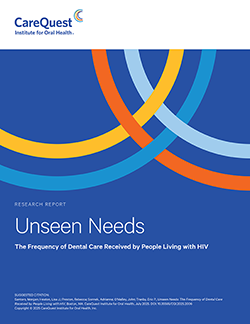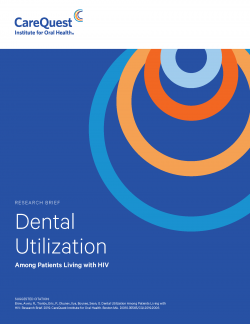More than 1.2 million people in the US living with human immunodeficiency virus (HIV) are significantly less likely to receive dental care compared to those without HIV, despite being at higher risk for oral health issues, according to this report from CareQuest Institute.
Using 2020–2022 medical and dental claims data to compare patterns in dental utilization between individuals with and without HIV, researchers found:
- Across nearly all age groups, individuals with HIV received dental treatment of any type less frequently than those without HIV. The only exception was for adults aged 65 and older.
- Of those with an HIV diagnosis, 34.6% had at least one dental service, compared to 53.9% of individuals without HIV.
- Periodontal care was the only treatment category where individuals with HIV had slightly higher utilization rates. Periodontal disease is more common among individuals with HIV due to weakened immune systems, making periodontal treatment particularly important.
Individuals with HIV have an increased risk of oral health problems — including dry mouth, periodontal disease, and oral candidiasis (thrush) — due to a weakened immune response. In addition, those who are HIV-positive often face barriers to receiving adequate oral health care, including discrimination and stigma.
These findings reinforce the importance of culturally competent, stigma-free dental care and the integration of oral health services into HIV care frameworks.
You may also be interested in:
- Transforming Oral Health Care Through Interprofessional Education (IPE), a white paper exploring the integration of oral health into IPE to address systemic health issues.
- Oral Health and the LGBTQ+ Community: A Snapshot of Disparities and Discrimination, a visual report finding that LGBTQ+ individuals have greater difficulty getting dental care and are more likely to visit a hospital emergency department for dental care.
- Does Our Oral Health Care System Welcome Everyone?, a report, based on insights from our annual State of Oral Health Equity in America survey, analyzing persistent barriers to equitable oral health care.

